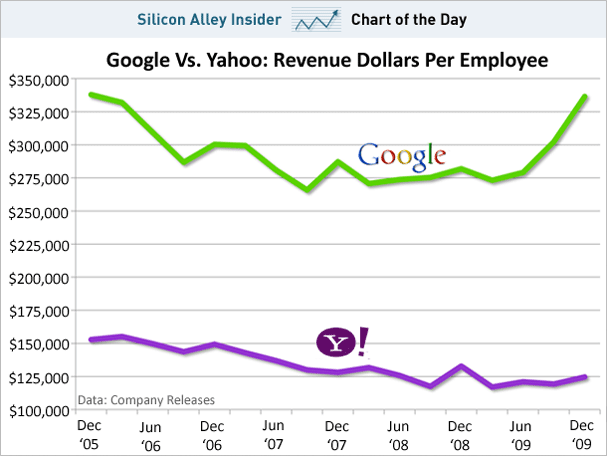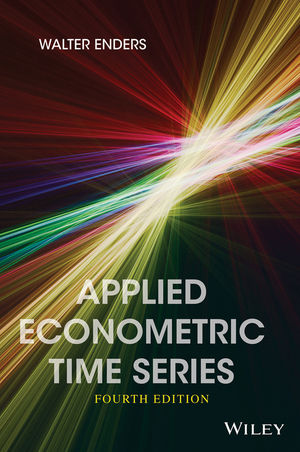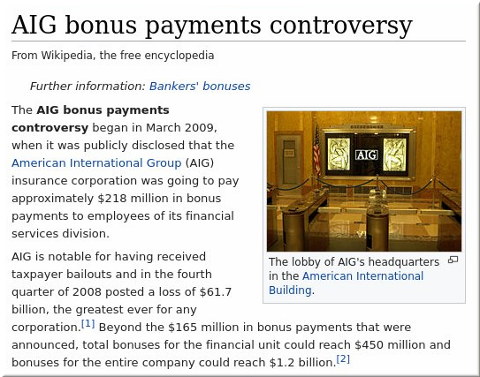Contents:


A cash flow from operating activities’s ability to pay all interest expense on its debt obligations is likely when it has a high times interest earned ratio. The TIE ratio is based on your company’s recent current income for the latest year reported compared to interest expense on debt. To better understand the TIE, it’s helpful to look at a times interest earned ratio explanation of what this figure really means.
- Barbara is currently a financial writer working with successful B2B businesses, including SaaS companies.
- In general, a company with a times interest earned ratio of less than 1.0 is considered to be in danger of defaulting on its debt payments.
- So you now know the TIE ratio formula, let’s consider this example so you can understand how to find times interest earned in real life.
- The higher the times interest earned ratio, the more likely the company can pay interest on its debts.
- The operating margin ratio compares the operating income to its net sales to illustrate its operating efficiency.
The higher the times interest earned ratio, the more likely the company can pay interest on its debts. The interest coverage ratio, sometimes referred to as “times interest earned,” determines how easily a company can pay its interest expenses on outstanding debt with operating earnings. The ratio is most commonly calculated by dividing a company’s earnings before interest and taxes by its interest expenses for the same period. The times interest earned ratio is a solvency ratio which illustrates how well a company can meet its long-term debt obligations. This is an important measure for creditors to utilize when deciding whether or not to lend money to a company.
Times interested earned ratio is calculated by dividing EBIT by interest expenses. The result shows how many times a company can pay off its interest expenses with its operating income. The times interest earned ratio is calculated by dividing earnings before interest and taxes by the total interest expenses. Interest expense and income taxes are often reported separately from the normal operating expenses for solvency analysis purposes. This also makes it easier to find the earnings before interest and taxes or EBIT.
Learn first. Trade CFDs with virtual money.
Also, businesses that rely on extending credit to buyers of their products or services may have a low times interest earned ratio while still maintaining good financial health. A company can raise capital through debt offerings rather than issuing stocks in as much as the company has a record of maintaining annual regular earnings. Companies that generate regular earnings are more attractive to lenders. A good example is the Utility company, they will be able to raise 60% or more of their capital from issuing debt. On the other hand, businesses that have irregular annual earnings try to use stock to raise capital.
The reverse situation can also be true, where the ratio is quite low, even though a borrower actually has significant positive cash flows. A much higher ratio is a strong indicator that the ability to service debt is not a problem for a borrower. The TIE ratio is always reported as a number rather than a percentage, with a higher number indicating that a business is in a better position to pay its debts. For example, if your business had a times interest earned ratio of 4 times, it would mean that you would be able to repay your interest expense four times over.

It is an indicator to tell if a company is running into financial trouble. A high ratio means that a company is able to meet its interest obligations because earnings are significantly greater than annual interest obligations. Perhaps your accounting software or ERP system automatically calculates ratios from financial statements data. These automatic ratio calculations could include the times interest earned ratio from the company’s income statement data.
Factoring with altLINE gets you the working capital you need to keep growing your business. Here’s everything you need to know about the Times Interest Earned ratio, which includes how to calculate it and what it means for your business. The Ascent is a Motley Fool service that rates and reviews essential products for your everyday money matters. We’re firm believers in the Golden Rule, which is why editorial opinions are ours alone and have not been previously reviewed, approved, or endorsed by included advertisers. Editorial content from The Ascent is separate from The Motley Fool editorial content and is created by a different analyst team.
Times interest earned ratio
Times interest earned or interest coverage ratio is a measure of a company’s ability to honor its debt payments. It may be calculated as either EBIT or EBITDA divided by the total interest expense. The purpose of the TIE ratio, also known as the interest coverage ratio , is to evaluate whether a business can pay the interest expense on its debt obligations in the next year. In the context of times interest earned, debt means loans, including notes payable, credit lines, and bond obligations.
MEG Energy Corp. (TSE:MEG) Given Average Recommendation of … – MarketBeat
MEG Energy Corp. (TSE:MEG) Given Average Recommendation of ….
Posted: Fri, 14 Apr 2023 08:46:28 GMT [source]
It’s a way of measuring a company’s ability to pay off the interest accruing on its loans, and is expressed as a ratio. For instance, if the ratio is 3.0, the company has enough income to pay its interest obligations three times over. If a company has a low times interest earned ratio, it can improve this measure by increasing earnings or by paying off debt. Cost-cutting can be an effective way to increase earnings, even if sales are not expanding. Refinancing existing debt can also reduce debt service payments and boost the times interest earned ratio. For one thing, it may not account for a large balloon payment of principal that could be due on a business’s debt in the near future.
Importance of Times Interest Earned Ratio
Companies that headed into this downturn without a financial cushion are already feeling the pain from the slowdown. Since interest expense had been deducted in arriving at income before income tax on the income statement, it is added back in the calculation of the ratio. To calculate TIE, you take earnings before interest and taxes and divide that figure by the total interest payable on bonds and other contractual debt. While this ratio does show you how much of a company’s leftover earnings are available to pay down the principal on any loans, it also assumes that a firm has no mandatory principal payments to make.
Sony Group Co. Shares on the Rise as Natixis Advisors L.P. … – Best Stocks
Sony Group Co. Shares on the Rise as Natixis Advisors L.P. ….
Posted: Fri, 14 Apr 2023 17:32:09 GMT [source]
The main difference between the interest coverage ratio and the times interest earned ratio is the way in which they are calculated. However, they both measure a company’s ability to make its interest payments. Times interest earned ratio measures a company’s ability to continue to service its debt.
Let’s explore a few more examples of times interest earned ratio and what the ratio results indicate. Being non-cash expenses, depreciation and amortization will not affect the company’s cash position in any way. The profit margin ratio is broadly the ratio of profit to total sales times one hundred percent. It may be calculated as either EBIT or EBITDA divided by the total interest payable. It may be calculated as either EBIT or EBITDA, divided by the total interest payable.
Pembina Pipeline Co. (NYSE:PBA) Receives Consensus Rating of … – MarketBeat
Pembina Pipeline Co. (NYSE:PBA) Receives Consensus Rating of ….
Posted: Fri, 14 Apr 2023 08:18:31 GMT [source]
It only focuses on the short-term ability of the business to meet the interest payment. If you are a small business with a limited amount of debt, then the ratio is not all that important. TIE takes EBIT into consideration and sometimes, this value might not represent enough cash plowed by an enterprise.
It helps the investors determine the organization’s leverage position and risk level. Debt To Equity RatioThe debt to equity ratio is a representation of the company’s capital structure that determines the proportion of external liabilities to the shareholders’ equity. The Times Interest Earned Ratio measures a company’s ability to service its interest expense obligations based on its current operating income. A times interest earned ratio of 2.15 is considered good because the company’s EBIT is about two times its annual interest expense.

If our operations can’t make as much as we’re paying to the bank in interest. And usually how we use this ratio is usually when we have a loan with a bank, they’re going to require some level of times interest earned. So the bank is going to regularly check our financial statements and check if we’re maintaining the times interest earned that’s in our contract. So the contract would say that we must maintain a times interest earned of three X. And if we don’t maintain that well, we could default on our loan that can make our whole loan do right now because we’ve defaulted on that part of the contract. So it’s a very important ratio when we’re dealing with loans the times interest earned.
- Before taxes, and this is the income generated purely from business after deducting the expenses that are incurred necessary to run that business.
- Because such interest payments are often made long term, they are generally classified as a continuing, fixed cost.
- A relatively high times interest earned ratio indicates that the company is generating a healthy operating income to cover its debts while also re-investing to continue generating profits.
- Common profitability ratios include gross margin ratio, operating margin ratio, return on assets ratio, and return on equity ratio.
Use the times interest earned ratio , also known as interest coverage ratio , to make an assessment. The times interest earned ratio is a popular measure of a company’s financial footing. It’s easy to calculate and generates a single number that is simple to understand. Times interest earned is used to measure if a company can pay up its debts or not. This calculates the number of times a company can pay up its interest charges before the deductions of tax.
The interest expense towards https://1investing.in/ and lease was $1.98 billion and $0.35 billion respectively. Calculate the Times interest earned ratio of Walmart Inc. for the year 2018 if the taxes paid during the period was $4.60 billion. Let us take the example of a company that is engaged in the business of food store retail.
Before taxes, and this is the income generated purely from business after deducting the expenses that are incurred necessary to run that business. The TIE’s main purpose is to help quantify a company’s probability of default. This, in turn, helps determine relevant debt parameters such as the appropriate interest rate to be charged or the amount of debt that a company can safely take on. Get instant access to video lessons taught by experienced investment bankers. Learn financial statement modeling, DCF, M&A, LBO, Comps and Excel shortcuts.
We also reference original research from other reputable publishers where appropriate. You can learn more about the standards we follow in producing accurate, unbiased content in oureditorial policy. According to S&P Global, 266 publicly traded U.S. companies had suspended or reduced their dividends in May 2020. The number of bankruptcy filings has risen sharply as well, with little revenue coming in, according to data from the American Bankruptcy Institute. The group reported 560 commercial Chapter 11 filings in April 2020, a 26% increase from last year. Since inception in 1978, the nonprofit AAII has helped over 2 million individuals build their investment wealth through programs of education, publications, software and grassroots meetings.
Let’s take a closer look at three examples to determine how easily the companies can pay their interest expense on outstanding debt with operating earnings. To provide some context, a few of the companies will be compared to their respective current industry interest coverage ratio median. Borrowing money is a necessity for most businesses to facilitate growth, but an inability to pay off the interest accrued on any loans is a red flag warning that insolvency may be on the horizon. Times interest earned evaluates the creditworthiness of a business.

0 comentarios